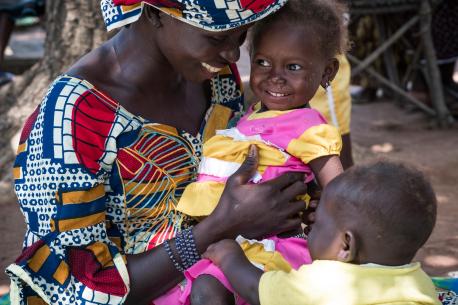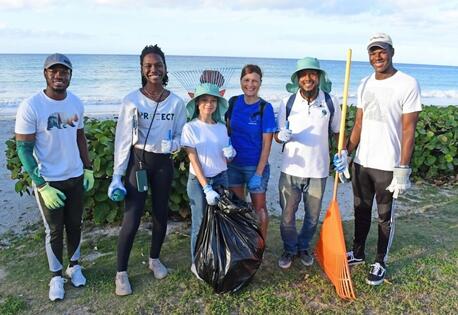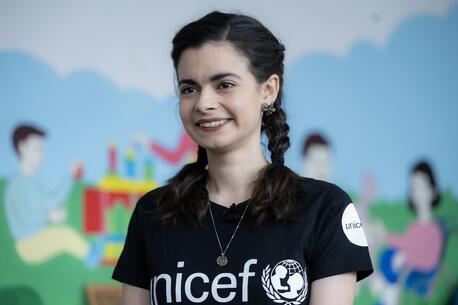
Global Examples of Humanitarian Aid from the UN
The UN coordinates humanitarian relief when natural and man-made disasters inflict devastation beyond what countries affected can handle.
Since its founding in 1945, the United Nations has worked "to achieve international co-operation in solving international problems of an economic, social, cultural or humanitarian character." Helping to rebuild the devastated continent of Europe after World War II was the first such problem the UN took on. Since then, the international community has relied upon the UN to coordinate humanitarian aid for areas hit by emergencies, both natural and man-made disasters.
When disasters strike that the governments of countries affected can't handle alone, the UN coordinates humanitarian relief to get help to those in need quickly and efficiently. Leading the way is the Office for the Coordination of Humanitarian Affairs (OCHA) of the UN Secretariat. OCHA orchestrates the response through the Inter-Agency Standing Committee, which is comprised of UN system organizations, each of which specializes in providing a specific type of relief.
UNICEF is just one of the UN agencies providing that humanitarian aid. Supplementing its work to save and protect children is the United Nations Development Program (UNDP), the United Nations Refugee Agency (UNHCR), the World Health Organization (WHO) and the World Food Programme (WFP), among others. Banding together, each plays a different role to meet all the humanitarian needs of those in crisis.
Financing that work is the UN Central Emergency Response Fund (CERF). Managed by OCHA, CERF receives voluntary contributions to provide immediate funding for lifesaving humanitarian action anywhere in the world.
The UN's Role in Humanitarian Aid
The UN's entities work in concert to provide a system-wide approach to humanitarian relief:
- The United Nations Development Program is responsible for natural disaster mitigation, prevention and preparedness. When emergencies occur, UNDP works with governments to coordinate relief and rehabilitation efforts at the national level.
- The UN Refugee Agency was founded after World War II to help Europeans displaced by that conflict. Today, UNHCR takes the lead in protecting refugees and solving the problems they face.
- UNICEF has helped save more children's lives than any other humanitarian organization by using effective, low-cost solutions to address the biggest threats to their survival. In response to today's protracted conflicts, UNICEF also intervenes on children's behalf with governments and warring parties to protect children, free child soldiers and arrange ceasefires to allow children access to lifesaving health and nutrition services.
- The World Food Program mobilizes food and transport financing to provide relief to victims of disasters and the refugees under UNHCR's care.
- The Food and Agriculture Organization of the United Nations helps farmers re-establish production following floods, outbreaks of livestock disease and similar emergencies.
- The FAO Global Information and Early Warning System issues monthly reports on the global world food situation that governments and humanitarian aid organizations rely upon to identify impending food shortages.
- The World Health Organization coordinates the international response to humanitarian health emergencies, like the coronavirus pandemic, ranging from disease outbreaks to conflicts to natural disasters. WHO takes the lead on global health matters, including setting the research agenda and norms and standards, issuing policy options, providing countries with technical support and monitoring and assessing health trends.
Syria: a brutal civil war hits the 10-year mark
Conflict and humanitarian crises have threatened Syrians' lives for a decade. Some 13.4 million people need humanitarian assistance, including 6.7 million internally displaced people (IDPs) — among them 4.8 million children. Some 5.6 million Syrian refugees, including 2.5 million children, now live in precarious conditions in neighboring countries.
Violence continues to affect civilians, who are being targeted for attack. Only 58 percent of Syria’s public hospitals are functional and one in three schools is damaged or destroyed. Millions of people in overcrowded settlements live in inadequate shelters with little to no access to basic services.
Due to limited testing, it’s impossible to assess the true scope of the COVID-19 pandemic, but the virus has spread across the country. The depreciating Syrian pound and oil and wheat shortages have helped spark an annual increase in the cost of a basic basket of food by 236 percent.
The UN Security Council's extension of the cross-border resolution kept the Bab al-Hawa Border Crossing open so that food, medicine and other lifesaving services could get into the country. Still, the single corridor makes access to people in need difficult. UN humanitarian agencies, including UNICEF, are providing relief, but funding gaps also mean many families and children struggle to meet their most basic needs.
Yemen: the world's worst humanitarian crisis
Yemen remains the world’s worst humanitarian crisis. Years of conflict, economic decline and institutional collapse have created enormous humanitarian needs, and the risk of large-scale famine is acute. More than 16 million people will go hungry this year, and nearly 50,000 people are already facing famine-like conditions. Nearly 2.3 million children under 5 are likely to suffer from acute malnutrition. Yemen is also grappling with the effects of cholera, COVID-19, forced displacement, protection risks and other serious challenges.
Aid agencies in Yemen provide lifesaving assistance to more than 10 million people every month. But to sustain these programs — and help the millions more who need relief — additional funding is urgently required.
Myanmar and Bangladesh: violence and life in precarious limbo
More than three years ago, some 750,000 people, most of them Rohingya, fled horrific military-backed violence in Myanmar’s Rakhine State. Over 1 million people (450,000 children) in Myanmar are affected by the ongoing decade of hostilities, which has exposed many to increasing threats of gender-based violence, exploitation, abuse, detention and trafficking. In Bangladesh, over 860,000 Rohingya refugees from Myanmar live in Cox’s Bazar in what is now the world’s largest refugee camp. Rohingya refugees in the camps live in extremely tight quarters in flimsy shelters they've built using plastic tarps and bamboo that are no match for monsoon flooding or other emergencies, like the massive fire that left tens of thousands homeless. Highly dependent on international aid and vulnerable to COVID-19, the Rohingya struggle to survive in precarious limbo.
Ethiopia: the double burden of conflict and climate shock
Inter-ethnic conflict, political instability, droughts and floods, a severe desert locust invasion and the coronavirus pandemic's ongoing socio-economic impact, are taking a brutal toll on Ethiopians. In mid-2020 the number of people targeted for humanitarian assistance doubled, but humanitarian aid agencies have difficulty reaching people in areas embroiled in conflict. UN agencies have been able to get some emergency supplies into the Tigray region, where violent conflict erupted in Fall 2020. However, the relief delivered is nowhere near what's urgently needed.


